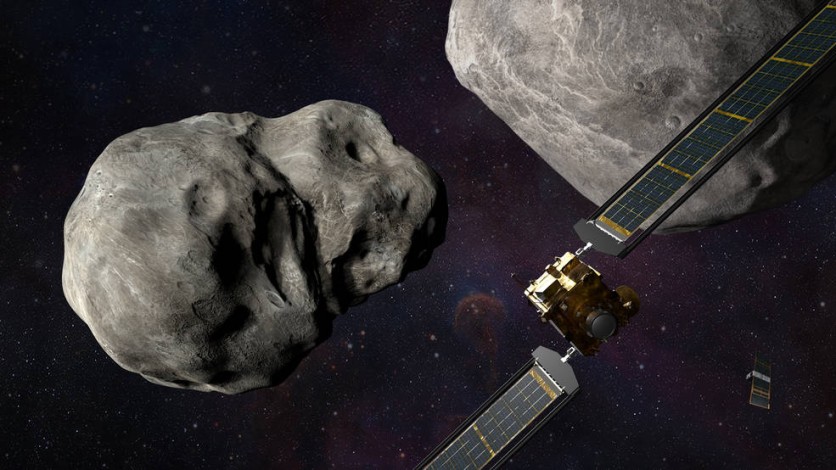You heard that right, NASA will be going up against an asteroid with its DART Spacecraft next month!
The Double Asteroid Redirection Test (DART) mission, run by the Johns Hopkins Applied Physics Laboratory (APL) in Maryland for NASA, will be the first-ever test of planetary defense.

Kinetic Impact Technology
At 7:14 p.m. on Sept. 26, The DART spacecraft will strike the asteroid Dimorphos at a speed of about 15,000 mph (24,000 kph) to change the celestial body's orbit around the larger asteroid Didymos at 23:14 EDT (23:14 GMT), as reported first by Space.com.
Despite not being on a collision trajectory with Earth, Dimorphos is being sent to test if "kinetic impact technology" can divert any possible asteroids that may be headed that way.
On November 24, 2021, a SpaceX Falcon 9 rocket carried out the mission's launch. DART has now logged about 6.8 million miles (11 million kilometers) of travel to the binary asteroid system Didymos.
Didymos, the larger asteroid, has a diameter of 2,525 feet (780 meters), whereas Dimorphos, the smaller "moonlet" asteroid, has a diameter of 525 feet (160 meters).
As a point of reference, the asteroid that violently burst over Chelyabinsk, Russia, in 2013 had a diameter of 60 feet (18 meters), according to Space.com.
Targeting a binary system was a deliberate decision. We'll soon be able to determine whether the impact of the DART spacecraft changed the orbit of Dimorphos since the two asteroids rotate around one another and can both be seen through telescopes on Earth.
Starting at 6 p.m., the general public can watch live coverage of the impact on NASA TV, the NASA website, and NASA social media pages on Sept. 26.
Will I Be Able To Watch The Actual Impact?
It is worth reminding, though, that you shouldn't anticipate seeing the live video of the actual impact. Although the Reconnaissance and Asteroid Camera for Optical Navigation (DRACO) camera is part of DART, it is not used to take pictures of the asteroid's surface as it approaches Dimorphos but rather to navigate the spacecraft autonomously.
However, when it destroys the spacecraft, the collision will stop the camera's data flow.
The Light Italian CubeSat for Imaging of Asteroids (LICIACube) from the Italian Space Agency will also be traveling with the mission.
Prior to impact, DART will launch LICIACube so that it can take pictures of the impact and its effects on the Didymos binary system as it passes by Dimorphos more slowly.
Hence, we will still be able to see what the impact would look like.
However, Space.com reported that the Hera mission from the European Space Agency would have a close encounter with Didymos and Dimorphos in about four years to examine DART's impact thoroughly.
It will still be a long way to go, but we have next month to anticipate NASA's very first planetary defense test!
Related Article : NASA's James Webb Space Telescope Captures First Clear Evidence of Carbon Dioxide in an Exoplanet's Atmosphere
This article is owned by Tech Times
Written by Joaquin Victor Tacla
ⓒ 2025 TECHTIMES.com All rights reserved. Do not reproduce without permission.




